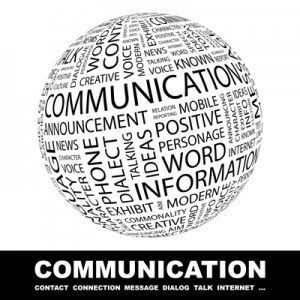In the ongoing evolution at the workplace, nothing makes the challenge of digital transformation more urgent and tangible than the question of access to the internet and the use of personal devices, characterized by the term BYOD (bring your own device). It is possibly the most sensitive issue for younger employees and potential recruits. In any event, I would argue that it is a strategic question that needs to be addressed with intelligence at the board level.
BYOD = BYOP
There are three important reasons why management needs to evaluate with care (and I would argue with a healthy degree of openness) the issue of employees bringing their own devices to work.
 Communications are happening on so many different channels in an asychronized fashion that it is difficult to keep track. In the game of cat and mouse that seems to be being played out between security teams and underground hackers, the challenge for an organization to monitor and control all communications is an uphill battle. Notwithstanding the issue of rendering secure company databases and systems, the email is quickly becoming antiquated or, at least, insufficient. SMS, Facebook messages, LinkedIn communications, VOIP services (Viber, Skype, Whatsapp…) are — among others — playing ever more important roles in professional communications. Clients and people at large are moving with the times, but IT departments and security fixes are lagging hopelessly behind. Many organizations resort to draconian solutions that include extremely reduced access to the internet and zero access to social media. If communication is the lifeblood of an organization, cutting off these “ancillary” communication channels — no matter the industry — will create long-term harm to the business. {Tweet this!}.
Communications are happening on so many different channels in an asychronized fashion that it is difficult to keep track. In the game of cat and mouse that seems to be being played out between security teams and underground hackers, the challenge for an organization to monitor and control all communications is an uphill battle. Notwithstanding the issue of rendering secure company databases and systems, the email is quickly becoming antiquated or, at least, insufficient. SMS, Facebook messages, LinkedIn communications, VOIP services (Viber, Skype, Whatsapp…) are — among others — playing ever more important roles in professional communications. Clients and people at large are moving with the times, but IT departments and security fixes are lagging hopelessly behind. Many organizations resort to draconian solutions that include extremely reduced access to the internet and zero access to social media. If communication is the lifeblood of an organization, cutting off these “ancillary” communication channels — no matter the industry — will create long-term harm to the business. {Tweet this!}.
Communications are the lifeblood of an organization
- A person’s own device(s) is deeply personal. It contains vital information for a person’s life (family contact information and banking details much less personal photographs). Making people use a “professional” device separately from a personal device widens the divide between personal and professional spheres. This is counter productive when considering personal motivation. I believe that the device is — for good or bad — becoming an extension of one’s personality. To the extent that I encourage having employees bringing their full personality to work (BYOP), the personal device thus becomes essential in motivating individuals. In a world, where individuals must take responsibility for their ongoing learning, much of that learning will be happening on personal devices. It is my conviction that keeping a chasm between one’s personal and professional spheres will challenge the individual’s ability to have a more profound fulfilment. If recruitment (even retention) of talented employees is a concern, then the opportunity to remain personally connected and engaged is a strategic issue. {Tweet This!}

- Branding gets personal. With the flattening of communication channels between customers and companies, employees need to find ways to communicate with their clients in new ways — particularly if being customer centric is a central preoccupation. Customers’ communication preferences are changing. The other day, a major airline company insisted that I fax to them a form. They might as well have asked me to ride a horse to come to their office. This “solution” came about because their site was completely inflexible and ill-adapted. In the online customer service space, where they permitted an attachment, only one document could be uploaded and it had a size limit of under 1MB. My three-page PDF was too heavy for their system. The customer service representative informed me that “policy” excluded my ability to emailing them the attachment. Quite preposterous! I believe that disallowing a communication on Facebook or SMS is about the same nonsense — if not now, it will become similarly antiquated in the very near future. Having the option to access the full internet — including social media platforms — on personal devices is vital for making customer contact more tangible, effective and efficient. {Tweet This!}
Bring your own (personal) device
There are obvious challenges in the BYOD conundrum. But, for alert executives, these challenges need to be faced and overcome. Guidelines, training and counsel for the staff are a necessary part of the good proceedings. As far as “wasting time” on Facebook (and other social media) is concerned, employees will always need downtime. It’s healthy, not to say necessary to remain connected to one’s personal life. If individuals are forced to carry two or more devices all the time, I think employees will find circuitous routes to gain satisfaction which, ultimately, means that companies are causing unnecessary entropy, rather than encouraging energetic dynamism. Keeping lines of communication fluid is critical. I have written about the difficulty of getting in touch with certain people at work in this post “The Mystery of the Unanswered Message.” Many people are either overwhelmed or disenchanted enough that they do not get back (or worse, do not have a culture of responding). This can cause a watershed divide in customer or stakeholders relations. Organizations need to find ways to help employees communicate better — between themselves as well as with clients.
Enabling employees and encouraging total engagement means that employees need to bring their full personality (and game) to work. Allowing them to bring their own device (BYOD) is probably one of the most tangible ways to permit BYOP.












